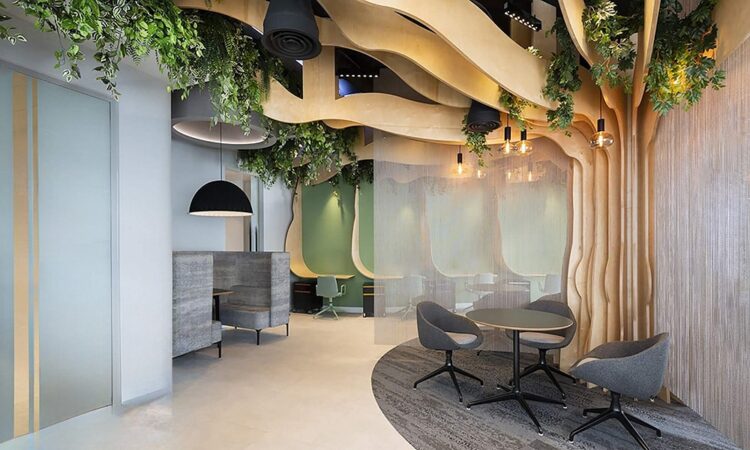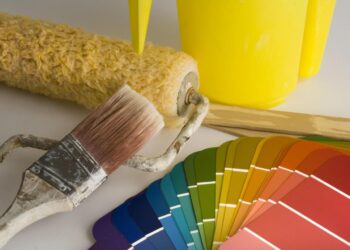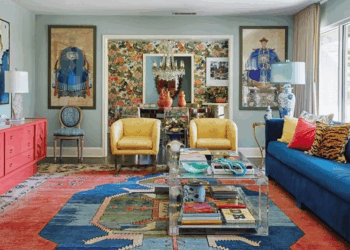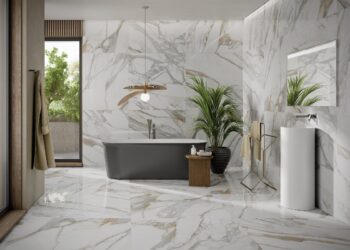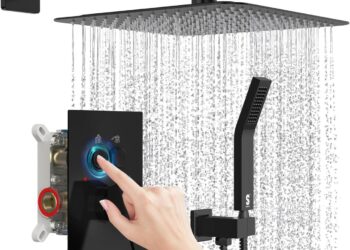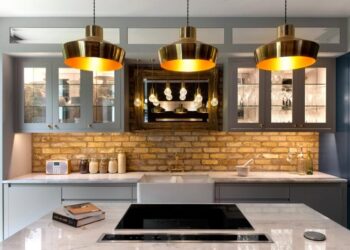Have you noticed more homes and offices suddenly looking like mini jungles? That’s not just a decor trend it’s the power of biophilic design taking over indoor spaces. But what is biophilic design, and why is it booming? Sit tight, grab your matcha or coffee, and let’s dig into this green revolution that’s making indoor life feel a lot more alive.
What Is Biophilic Design, Anyway?
Biophilic design is all about bringing elements of nature into our indoor environments. The idea is rooted in something called “biophilia,” a term coined by biologist Edward O. Wilson. It refers to our innate connection to nature. In other words, we’re hardwired to thrive in natural environments, not in cold, sterile spaces with no windows or plants.
So, what does that mean for your living room, office, or favorite cafe? Think sunlight streaming in, potted plants on every surface, wooden textures, indoor water features, and even sounds that mimic a forest or ocean. These little touches can do big things for our mental and physical well-being.
Why Biophilic Design Is Blowing Up
The past few years especially with the work-from-home boom—have pushed us to re-evaluate how our spaces make us feel. People started realizing that staring at beige walls all day wasn’t exactly soul-nourishing. Cue the rise of biophilic interiors!
Here are a few reasons why this trend is booming:
A. Mental Health Awareness
We’re more conscious than ever about our mental health. Natural elements have been proven to reduce stress, anxiety, and depression. Biophilic spaces give us a sense of calm and grounding in a chaotic world.
B. Work-from-Home Culture
When your kitchen table turns into your office, you need it to be a place you want to be. Adding a little greenery or natural light can boost productivity and improve focus. It’s the kind of upgrade that’s both stylish and functional.
C. Sustainability and Eco-Living
The biophilic trend also ties in perfectly with the growing interest in eco-friendly lifestyles. People want their homes to reflect their values, and that includes being more in tune with the environment—even indoors.
D. Better Air Quality
Let’s not forget the health perks. Many indoor plants help purify the air, reducing toxins and improving the overall air you breathe. That’s a big win in urban apartments and closed office spaces.
Key Biophilic Elements to Add Indoors
Now let’s get practical. Want to bring some nature into your space? Here are the key elements that make a room feel biophilic:
A. Natural Light
Let the sunshine in! Swap out heavy curtains for lighter ones, or move furniture to maximize sunlight. Natural light improves mood and supports our sleep wake cycles.
B. Indoor Plants
This one’s a no brainer. From snake plants and pothos to fiddle leaf figs, there’s a plant for every level of green thumb. Bonus: plants are Instagram gold.
C. Natural Materials
Think wood, stone, bamboo, or rattan. Whether it’s a wooden coffee table or a jute rug, these materials create a cozy, earthy vibe.
D. Water Features
A small indoor fountain or even the sound of water can bring a serene, spa-like feel to any room. Plus, it’s a cool conversation starter.
E. Nature-Inspired Colors
Use greens, browns, soft blues, and warm neutrals to mimic outdoor scenery. These colors tend to have a calming psychological effect.
F. Organic Shapes and Forms
Ditch harsh lines and go for curves. Think circular mirrors, wavy furniture, and rounded light fixtures. It’s all about mimicking nature’s flow.
G. Living Walls and Vertical Gardens
If you’re feeling adventurous, go for a vertical garden. These are not only show-stopping but also save space and improve indoor air quality.
Biophilic Design in Different Spaces
How you incorporate biophilic design depends on the room. Let’s break it down.
A. Living Room
Add tall plants, use wood-finished furniture, let in as much light as possible, and throw in some earth-toned cushions or rugs.
B. Bedroom
Keep it simple and cozy. Use soft lighting, breathable natural fabrics, and calming green plants like lavender or aloe vera.
C. Kitchen
Herb gardens on windowsills are a great biophilic touch and practical too. Open shelving with wooden textures and fruit bowls adds a natural feel.
D. Bathroom
Think spa vibes. Bamboo accessories, small water features, and moisture loving plants like ferns or peace lilies work great here.
E. Workspace or Home Office
This is where you can maximize natural light, add a few low-maintenance plants, and opt for wood or stone accents in your desk or shelves.
The Science Behind Biophilia
This trend isn’t just aesthetically pleasing it’s backed by solid science. Numerous studies have shown that natural elements indoors can:
A. Reduce cortisol levels (a.k.a. stress hormone)
B. Improve cognitive performance and creativity
C. Lower blood pressure and heart rate
D. Enhance mood and emotional well-being
E. Support better sleep and overall health
It’s amazing what a plant and some sunlight can do!
Biophilic Trends to Watch in the Coming Years
As biophilic design becomes more mainstream, here are a few trends to keep an eye on:
A. Smart Integration
Smart homes will start incorporating nature, like smart planters or lighting systems that mimic natural circadian rhythms.
B. Eco-Friendly Materials
Expect to see more sustainable, recycled, and biodegradable materials in home design.
C. Outdoor Indoor Blends
Blurring the line between inside and outside is big. Think retractable glass walls, indoor courtyards, or even garden showers.
D. Community Spaces with Biophilic Focus
Malls, co-working spaces, and public buildings are embracing greenery in their architecture, aiming to improve communal well-being.
How to Get Started with Biophilic Design (Without Breaking the Bank)
You don’t need to overhaul your entire home to hop on the biophilic bandwagon. Here’s a simple guide to get started:
A. Start Small
Begin with a few plants or switching out synthetic materials for natural ones.
B. Prioritize Light
Open those windows and use mirrors to bounce natural light around.
C. DIY Projects
Make your own terrarium, paint a wall with a soft earthy tone, or hang some nature-themed art.
D. Choose Multipurpose Items
A wooden bench can serve as storage and a visual earthy element.
E. Shop Second Hand
Thrift stores often carry wooden or rattan furniture that fits the biophilic aesthetic perfectly.
Final Thoughts: Nature Belongs Indoors, Too
The biophilic boom is more than just a trend it’s a response to how disconnected we’ve become from the natural world. By bringing elements of nature inside, we’re not just making our spaces prettier; we’re making them healthier, more sustainable, and more aligned with how we’re meant to live.
Whether you’re going full jungle mode or just adding a few leafy touches, there’s a biophilic approach for everyone. Your brain, body, and soul will thank you for it.

